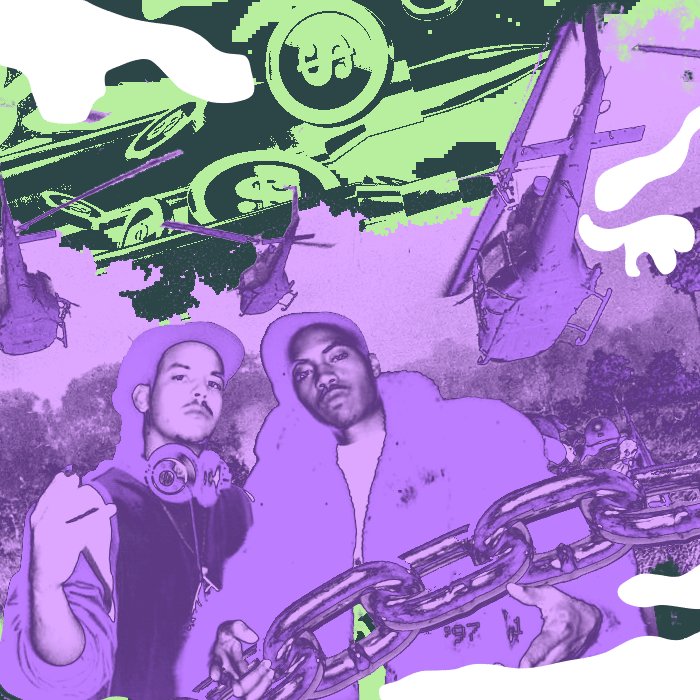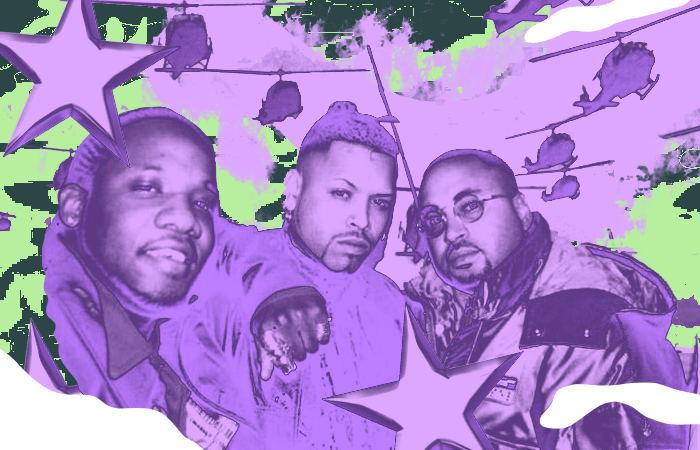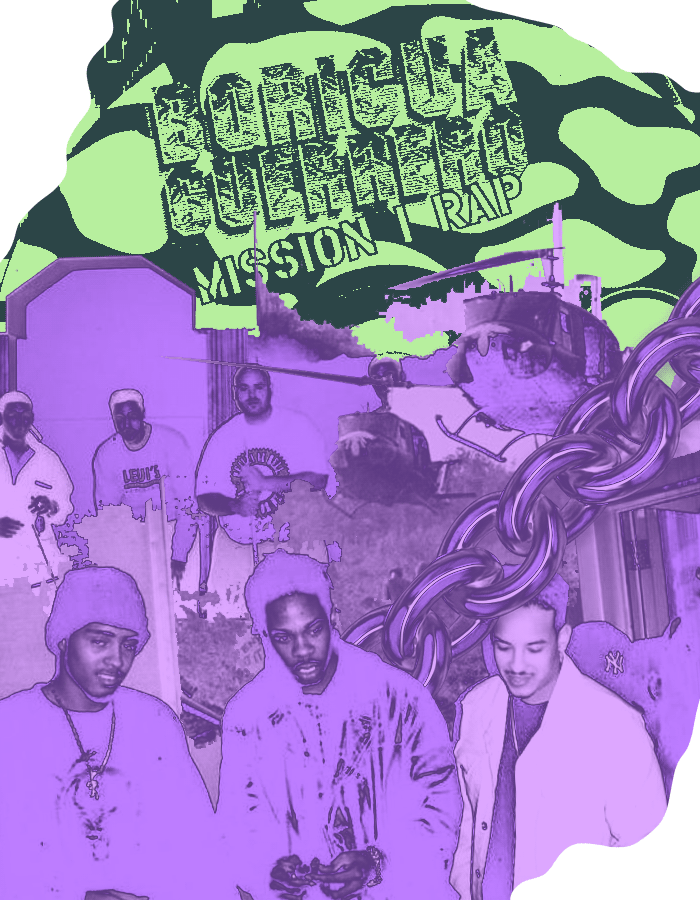Reggaeton began organically as a transformation of dancehall, hip-hop, and reggae en español. As an Afro-diasporic movement, Panama, Puerto Rico, Jamaica, the Dominican Republic, and New York are all pivotal landscapes in the style’s musical evolution. Through Tu Pum Pum: The Story of Reggaeton, a new column by Eddie Cepeda, we’ll explore reggaeton’s history, sociopolitical struggles, and its impact as a global force in music and culture.
Ask an older hip-hop head – or young romantic of the genre – and they’ll tell you that to be in New York in 1997 was to bear witness to hip-hop wizardry. The genre was basking in the warm afterglow of golden age rap, and had yet to succumb to the excess of the jiggy era. And though many will always argue about which era was the best (just wait, one day you’ll wax poetic about the mumbliest of mumbles to your kids), one thing is clear: by 1997, the art form’s infectious sampling, lyrical decimation, and depiction of life in New York’s outer boroughs made tunnel banger hip-hop something to truly behold.
For over 25 years, Unique Recording Studios operated on the top three floors of the now-razed Cecil B. DeMille building in New York, and once served as the lifeblood of rap in the city. The birth of recorded hip-hop can be traced to those very rooms, in the form of productions by Arthur Baker and Tommy Boy Records. The list of artists who used those studios to leave their legacies on the world is endless.
In 1997, DJ Playero and Nico Canada holed themselves up in a New York City hotel room for two months, hoping to capture some of that magic, and in the process, preach the gospel of dembow to a new audience. The fruit of their efforts resulted in a rallying cry declaring that Puerto Rican reggaetoneros had arrived. Boricua Guerrero: First Combat exposed underground/reggaeton stars and up-and-comers to a wider U.S. audience by joining forces with some of hip-hop’s elite. It helped crack the door open, creating the space for an eventual reggaeton takeover – and the entire first disc didn’t even have a single dembow riddim.

Though underground thrived in Puerto Rico, and mixtape series like the Playero compilations and DJ Negro’s The Noise often showcased reggaeton stars spitting rhymes on boom-bap backbeats, Boricua Guerrero: First Combat took future reggaeton stars like Winchester Yankee (soon to rebrand as Daddy Yankee) and put them in the studio with some of hip-hop’s biggest artists, like Q-Tip, Nas, Busta Rhymes, Fat Joe, and Big Pun to name a few. This was the biggest collaboration between Puerto Rican and mainland rappers at the time. One might even say Boricua Guerrero: First Combat was the most ambitious crossover event in history.
This was reggaeton’s cotillion.
Boricua Guerrero: First Combat – Mission I Rap is the mouthful namesake of the first disc in the compilation, and the album’s intro serves as a sort of declaration of war, outlining the myth of borders, and refers to Puerto Rico and the mainland U.S. as two nations united by the collaboration. Throughout the record, Playero and Canada’s production features the kind of New York-style, mid- to late 90s hip-hop beats that were popping at the time – beats that would have felt equally at home at a cypher, on a Big L record, or as a backing track on a Stretch and Bobbito show freestyle. And the Puerto Rican rappers held nothing back as they went toe to toe with hip-hop’s brightest.
Right out of the gate, Javiah and Busta Rhymes’ “Loco Como Rodman” sets the tone for this near-hour of tunnel bangers. And there’s no shortage of standout moments throughout. Eddie Dee holds it down solo on “Sube Y Baja,” the late Mexicano’s sandpaper flow perfectly complements Fat Joe’s effortless delivery on “No Mas Tregua.” Plus, “Listo Para Morir,” by Miguel y Kalil and Akinyele, could be a classic in its own right. But perhaps one of the most surprising moments is when Daddy Yankee – then Winchester Yankee – snapped on “The Profecy.” His now long-abandoned backpacker flow might come as a shock to the legions of fans who know him for his lighter, less severe subject matter and delivery, like rapping about gasolina or hula hoops.

It’s impossible to overstate the impact the album had, and how costly the project must have been. “Even now, I dare say there’s been no CD that cost this much to make,” Playero told El Diario de San Juan on the 10th anniversary of the project. “We were the first to fuse Borinquen rappers with United States rappers,” he said, echoing the sentiment the album begins with. But the exorbitant cost paled in comparison to the long-lasting effect the project had on Puerto Rican, mainland U.S., and to an extent, global culture.
“We were the first to fuse Borinquen rappers with United States rappers.”
This was pivotal moment for the genre’s trajectory – perhaps its first breaking point. It legitimized Puerto Rican rappers to mainland audiences. But it was so much more than just an exercise in lyrical flexing. This wasn’t about showing off bars. This was about showing the world that Puerto Rico had an entire urbano music community that needed to break. And the way to do that was through disc 2, Mission II Reggae, the Trojan Horse of the project.
Disc one captivated hip-hop audiences and proved that Boricuas could hold their own against already well-known rappers. It served its purpose, grabbing the listener’s attention. Then, the 21-track dembow assault on disc 2 introduced the same audiences to Playero’s secret formula. Though this was still mostly underground-style reggaeton, before its transformation to mainstream pop, the production and execution on these tracks was far superior to earlier Playero mixtapes. And the word “reggaeton” occupied substantial space on various tracks. This was reggaeton’s cotillion.

But despite the effect it had on reggaeton’s growth, this wasn’t some cheap ploy to trick audiences into learning about the genre, and it surely wasn’t some third-rate attempt at emulating New York hip-hop. “Boricua Guerrero felt like its own genre, and like it had more flavor in comparison to other rap records of that time,” Nico Canada told El Diario. There’s something magical about the interpolation of rapid-fire bars coming from the likes of Don Chezina and Winchester Yankee alongside hip-hop royalty like Q-Tip – no matter how far-removed it is from the Yankee we hear on the radio in 2018. And perhaps most importantly, it’s part of a long history of musical collaboration and partnership between Puerto Ricans and African-Americans, a reality we see manifested in genres like Latin trap today. Without the inroads made by Boricua Guerrero, there would be none of the crossover collabs that emerged during reggaeton’s mid-2000s explosion, nor the groundbreaking contemporary link-ups we’ve seen since “Despacito,” like the Travis Scott and Nicki Minaj remix of “Krippy Kush.”
There’s still a few days of summer left, and with them, surely a couple of beach days. Cop that .rar file, unzip that shit, and upload it to your iTunes. Then, take a trip way back to when tunnel bangers met up with dembow at the bodega.
Stream Boricua Guerrero: First Combat via YouTube.







